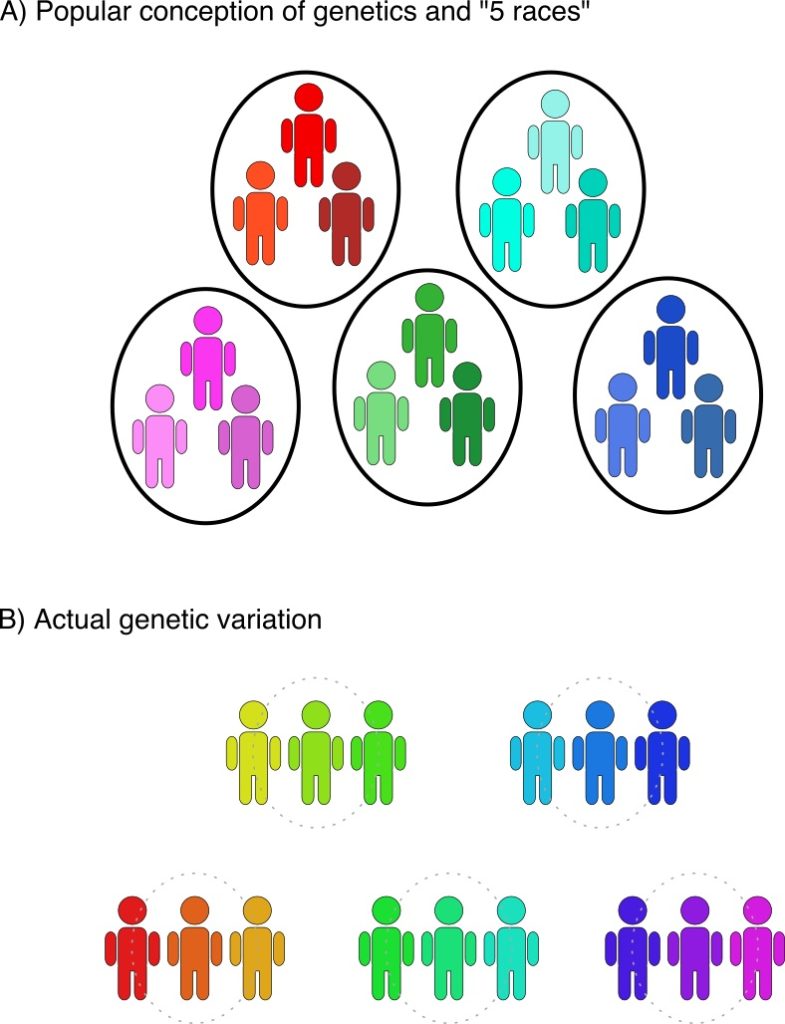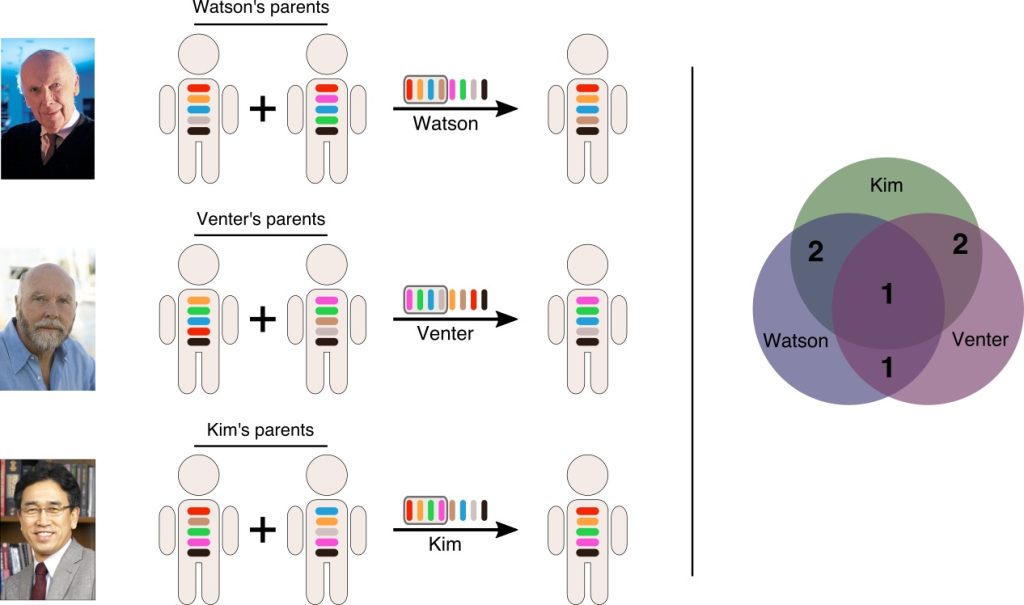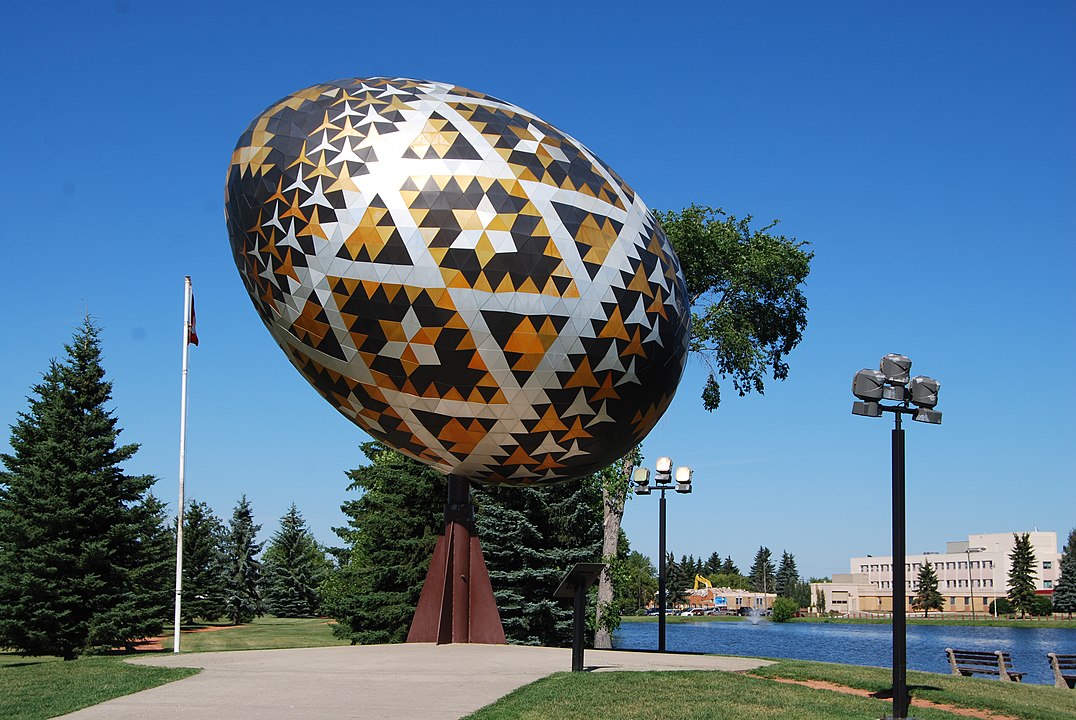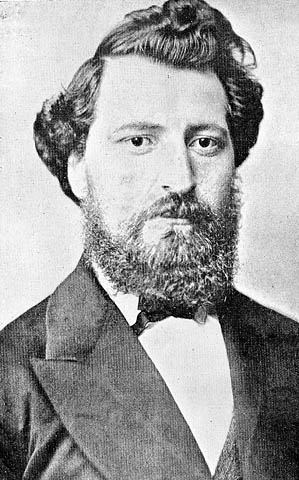11.1. Racial, Ethnic, and Minority Groups
While many students may be accustomed to conflating the terms race, ethnicity, and minority group, these three terms have distinct meanings for sociologists. The idea of race refers to superficial physical differences, like skin colour, that a particular society considers significant; ethnicity is a term that describes shared culture; and a minority group is subordinate, or lacking power in society regardless of skin colour or culture of origin. Subaltern groups are minorities that have difficulty expressing an identity outside of the definitions imposed on them by a dominant or colonial culture.
What Is Race?
Historically, the concept of race has changed across cultures and eras, eventually becoming less connected with ancestral and familial ties, and more concerned with superficial physical characteristics. In the origins of race science, theorists posited categories of race based on various geographic regions, ethnicities, skin colours, facial structures, and more. Their labels for racial groups often connoted regions (Mongolia and the Caucasus Mountains, for instance) or denoted skin tones (black, white, yellow, and red, for example). A common notion is the five race theory that can be traced back to the early race science of Johann Friedrich Blumenbach (1752-1840). Blumenbach suggested that humans were one species but could be categorized into five racial categories: African, European, Asian, Oceanic, and Native American (Bhopal, 2007).
However, this typology of race, developed during early racial science, has fallen into disuse in sociology, and racialization (the social construction of race) is a far more useful way of understanding racial categories. Races are complex sociocultural entities rather than genetically distinct categories. According to this school of thought, race is not a biologically meaningful term as humans are estimated to share 99.9% of their DNA (National Human Genome Research Institute, 2018). Rather, certain groups become racialized through a social process that marks them for unequal treatment based on perceived physiological differences or phenotypes. When considering skin colour, for example, the social construction of race perspective recognizes that the relative darkness or fairness of skin is an evolutionary adaptation to the available sunlight in different regions of the world. It speaks to geographical ancestry, but the amount of melanin (a pigment that determines skin colour) in the skin is relatively insignificant in itself. It is a minor trait that evolved independently of other genetic factors that might influence health, intelligence or behaviour.
Although a 2018 poll revealed that 53% of Americans believed that biology either totally (33.8%) or somewhat (18.8%) determines racial identity (Tillery, 2018), the use of skin colour to mark significant racial difference tends to be based on socioeconomic assumptions. In the 19th and early 20th century, numerous immigrant groups from Europe, such as Jews, Italians, Greeks, Ukrainians and Irish, were not considered “White” and only became so through cultural assimilation (Jacobson, 1999). The key variable in determining “Whiteness” therefore was not skin pigmentation but the official and unofficial processes of social gatekeeping and civic assimilation. In modern society, some people who consider themselves “White” actually have more melanin in their skin than other people who identify as “black.” Consider the case of the actress Rashida Jones. She is the daughter of a Black man (the jazz musician and producer Quincy Jones), but she does not play a Black woman in her television or film roles. On the other hand, the White Supremacist Craig Cobb, who was seeking through intimidation to turn a small town in North Dakota all “White,” went on a talk show where he was revealed through DNA testing to have genetically 14% sub-Saharan African ancestry (Stranglin, 2013). In Brazil, where racialized groups historically intermarried, the matter is more ambiguous because being considered “White” or “Black” is independent of racial descent in a biological sense (Telles, 2004). Racial identity depends on a complex social evaluation of skin pigmentation, hair type, nose shape, and lip shape, etc. so that biological siblings can potentially be of different races.
The social construction of race is also reflected in the way that names for racial categories change with changing times. It is worth noting that race, in this sense, is a system of labeling that provides a source of identity — specific labels fall in and out of favour during different historical eras. For example, the category “Negroid,” popular in the 19th century, evolved into the term “Negro” by the 1960s, and then this term fell from use and was replaced with “Black.” The term was intended to celebrate the multiple identities that a Black person might hold, but the word choice is an ambiguous one: It lumps together a large variety of ethnic groups under an umbrella term. Unlike the case in the United States where the term “African American” is common, most Black Canadians immigrated from the Caribbean and retain ethnic roots from that area. Culturally they remain distinct from immigrants from sub-Saharan Africa, or the descendants of the slaves brought to mainland North America. Some prefer to use the term “Afro-Caribbean Canadians” for that reason.
BIPOC is the contemporary acronym that stands for Black, Indigenous and People of Colour. The New York Times traced its first usage to a Twitter message in 2013, although the phrase “People of Colour” was first introduced as a term in the Oxford English Dictionary in 1796 (Garcia, 2020). It is an inclusive term that describes the shared experience of “visible minorities” as equity seeking groups facing similar practices of racial discrimination. It is not without controversy, however. While marking a distinction between Black and Indigenous experiences and other People of Colour to acknowledge their different historical backgrounds, as with the term “visible minorities,” there is also the danger of lumping all racialized groups in a category together rather than seeing the distinct issues they face.
Making Connections: Sociology in the Real World
Race in the New Era of Human Genetics Research (Vivian Chou, 2017)

In 2003, scientists completed the Human Genome Project, making it finally possible to examine human ancestry with genetics. Scientists have since tackled topics such as human migrations out of Africa and around the world (Rincon, 2016; Ghosh, 2015; BBC News, 2015). It is not just scientists who are excited about human genetics: widely affordable at-home ancestry test kits are now readily available from companies like 23andMe, Family Tree DNA, and Ancestry. For $99—around the price of a romantic dinner or a pair of Nikes—a customer can receive an analysis from 23andMe indicating that they are, for instance, 18.0% Native American, 65.1% European and 6.2% African.
The popularity of ancestry testing indicates a widespread perception that people can use these tests to dissect, delineate, and define their ancestral composition. Indeed, social media is teeming with posts from excited customers sharing their test results and their reactions. Ancestry test kits are the new “it” item — and with their success is the tacit admission of the belief that DNA can unambiguously sort people into categories like the “five races:” African, European, Asian, Oceania, and Native American (Bhopal, 2007).
Estimating ancestral composition down to 0.1% seem to suggest that there are exact, categorical divisions between human populations. But reality is far less simple. Compared to the general public’s enthusiasm for ancestry testing, the reaction from scientists has been considerably more lukewarm (Bolnick et al., 2007). Research indicates that the concept of “five races” does, to an extent, describe the way human populations are distributed among the continents—but the lines between races are much more blurred than ancestry testing companies would have us believe (Tishcoff and Kidd, 2004).
A landmark 2002 study by Stanford scientists examined the question of human diversity by looking at the distribution across seven major geographical regions of 4,000 alleles (Rosenberg et al., 2003). Alleles are the different “flavors” of a gene. For instance, all humans have the same genes that code for hair: the different alleles are why hair comes in all types of colours and textures. In the Stanford study, over 92% of alleles were found in two or more regions, and almost half of the alleles studied were present in all seven major geographical regions. The observation that the vast majority of the alleles were shared over multiple regions, or even throughout the entire world, points to the fundamental similarity of all people around the world—an idea that has been supported by many other studies (Romualdi et al., 2002; Chakrevarti, 2001).
If separate racial or ethnic groups actually existed, researchers would expect to find “trademark” alleles and other genetic features that are characteristic of a single group but not present in any others. However, the 2002 Stanford study found that only 7.4% of over 4000 alleles were specific to one geographical region. Furthermore, even when region-specific alleles did appear, they only occurred in about 1% of the people from that region—hardly enough to be any kind of trademark. Thus, there is no evidence that the groups people commonly call “races” have distinct, unifying genetic identities. In fact, there is ample variation within races (See Figure 11.3B).
Ultimately, there is so much ambiguity between the races, and so much variation within them, that two people of European descent may be more genetically similar to an Asian person than they are to each other (Gannon, 2016; see Figure 11.3).

The divisions between races are doubtlessly blurred, but does this necessarily mean that race is a myth—a mere social construct and biologically meaningless? As with other race-related questions, the answer is multi-dimensional and may well depend on whom one asks.
In the biological and social sciences, the consensus is clear: race is a social construct, not a biological attribute. Today, scientists prefer to use the term “ancestry” to describe human diversity. “Ancestry” reflects the fact that human variations do have a connection to the geographical origins of one’s ancestors—with enough information about a person’s DNA, scientists can make a reasonable guess about their ancestry (Lewontin, 1972; Collins, 2004). However, unlike the term “race,” it focuses on understanding how a person’s history unfolded, not how they fit into one category and not another. In a clinical setting, for instance, scientists would say that diseases such as sickle-cell anemia and cystic fibrosis are common in those of “sub-Saharan African” or “Northern European” descent, respectively, rather than in those who are “Black” or “White” Yudell et al., 2016).
However, even if scientists agree that race is, at most, a social construct, any cursory search of the internet reveals that the broader public is not convinced of this. After all, if an Asian person looks so different from a European, how could they not be from distinct groups? Even if most scientists reject the concept of “race” as a biological concept, race exists, undeniably, as a social and political concept.
The popular classifications of race are based chiefly on skin colour, with other relevant features including height, eyes, and hair. Though these physical differences may appear, on a superficial level, to be very dramatic, they are determined by only a minute portion of the genome: humans as a species have been estimated to share 99.9% of our DNA with each other (National Human Genome Research Institute, 2018). The few differences that do exist reflect differences in environments and external factors, not core biology. Importantly, the evolution of skin colour occurred independently, and did not influence other traits such as mental abilities and behavior. In fact, science has yet to find evidence that there are genetic differences in intelligence between populations (Lindsey, 2013). Ultimately, while there certainly are some biological differences between different populations, these differences are few and superficial. The traits that humans do share are far more profound.
Despite the scientific consensus that humanity is more alike than unlike, the long history of racism is a somber reminder that throughout human history, a mere 0.1% of variation has been sufficient justification for committing all manner of discrimination and atrocity. The advances in human genetics and the evidence of negligible differences between races might be expected to halt racist arguments. But, in fact, genetics has been used to further racist and ethnocentric arguments—as in the case of the alt-right, which promotes far-right ideologies, including White-supremacism and anti-Semitism.
“Race in the new era of human genetics research” adapted from Vivian Chou, 2017, How Science and Genetics are Reshaping the Race Debate of the 21st Century. Used under a CC BY-NC-SA 4.0 licence.
What Is Ethnicity?
Ethnicity is a term that describes shared cultural heritage — the distinct practices, beliefs and way of life of a group. This includes shared origins, geographical locations, languages, religions, and traditions, among other commonalities. Ethnic identity is the positive attitude and attachment an individual or group forms with an ethnicity based on their perception of common ancestry and shared socio-cultural characteristics and experiences. It implies the ability to use cultural distinctions to identify with the “we-ness” of a self-group in distinction to the “they-ness” of other groups, considered as Others, outsiders, enemies or strangers.
Although there is an influential tradition going back to philosophers like Johann Gottfried Herder (1744-1803) that views ethnicity as an underlying and unchanging spirit or essence of “a people” (Taylor, 1994), contemporary sociologists who examine ethnicity as it is practiced and lived today tend to view it as non-fixed, fluid and situational in character. Unlike race, ethnicity is usually considered a product of cultural heritage distinct from biology (although the concepts can overlap in complex ways), but, like race, individuals may be identified or self-identified with ethnicities in complex, even contradictory, ways.
For example, defining ethnicity is an identification method that individuals and institutions use today — whether through immigration categories, the census, truth and reconciliation commissions, anti-discrimination laws and equity measures, or simply in personal day-to-day relations. These categories often appear as straightforward social facts, even if it is common for Canadians to have mixed ethnic backgrounds that make it difficult to self-identify. Nevertheless, the ethnic categories themselves have histories and social contexts. As with race, individual actors and groups negotiate their ethnic identity internally as well as with those outside the group.

The history of the Ukrainians in Canada is a case in point (, 2000; 2002). The first wave of Ukrainian migration to the Canadian prairies from parts of the (contemporary) Ukraine controlled by the Austrian Hapsburg Empire took place between the 1880s and 1914. They faced discrimination in Canada in the form of racialized discourses that regarded peripheral Southern and Eastern Europeans — the “Latin, Slav, Semitic, and Mongolian races” — as “inferior racial stock,” incapable of assimilating and building a new civilized Canadian society (Satzewich, 2000). This rejection by the dominant culture and institutions, however, was the first element in the formation of a vibrant Ukrainian ethnic identity. In order to solidify and maintain their communities, the immigrants were obliged to turn inward to create their own diasporic community organizations, churches, dance and music events, libraries and cultural or folkloric activities.
The second element was the creation of a unique ethnic identity itself. Most of the immigrant workers and peasants who migrated to Canada came without a concept of themselves as Ukrainians. They tended to identify themselves with their local villages or regions of origin and the idea of “The Ukraine” as a distinct nation or nationality was nebulous. During the immigration process they might describe themselves to immigration authorities by country of origin, (which varied between Austria, Russia, or Hungary), by regional identity, (Galician, Bukovynian, or Lemko), or by religion (Ukrainian Greek Catholic, which was often interpreted as “Greek”). The larger ethno-cultural category that identified them was “Rusyn,” which translated confusedly into English as Russian or “little Russian,” and by 1900 this term was replaced by “Ruthenian.” It was not until the 1st World War (1914-1918) that “Ukrainian” was adopted.
Satzewich (2002) regards this “Ukrainianization” of the community as the outcome of an internal conflict between factions within the larger North American diasporic community, which struggled over whether they would align themselves with a Ukrainian, Hungarian or Russian homeland and aspirations to statehood in Europe. The identity had to do more with the politics of an imagined homeland than with the expression of an existing, well defined cultural tradition. Comparing the Ukrainian struggle for ethnic identity with the Irish struggle to be regarded as “White,” Satzewich says:
For stateless members of diaspora communities [like the Canadian Ukrainians], the politics and identities in the homeland may have led them to be less concerned about their place within racial hierarchies in their new homelands and more concerned about the place of their imagined community on the map of Europe…. Contrary to the Irish, who responded to their racial assignment by asserting a [White] racial identity, Ukrainians responded by creating and asserting an ethnic identity that legitimated claims to statehood in Europe (Satzewich, 2000).
The Ukrainian example illustrates the complexity and overlapping of ethnicity, race and national identity. From the point of view of interpretive or social constructivist sociology, ethnic identification, like racialization, is a process subject to historical, cultural and political factors and negotiation. To say that it is a fluid category like this means that it is subject to both external recognition and validation and to periodic redefinition and reinvention of “traditions.”
What is a Minority Group?
Sociologist Louis Wirth (1897-1952) defined a minority group as “any group of people who, because of their physical or cultural characteristics, are singled out from the others in the society in which they live for differential and unequal treatment, and who therefore regard themselves as objects of collective discrimination” (1945). The term minority connotes discrimination, and in its sociological use the term subordinate can be used interchangeably with the term minority, while the term dominant is often substituted for the group that is in the majority. These definitions correlate to the concept that the dominant group is that group which holds the most power in a given society, while subordinate groups are those who lack power compared to the dominant group.
According to Charles Wagley and Marvin Harris (1958), a minority group is distinguished by five characteristics: (1) unequal treatment and less power over their lives, (2) distinguishing physical or cultural traits like skin colour or language, (3) involuntary membership in the group, (4) awareness of subordination, and (5) high rate of in-group marriage (Wagley and Harris, 1958). Additional examples of minority groups might include the LGBTQ community, religious practitioners whose faith is not widely practiced where they live, and people with disabilities.
Note that being a numerical minority is not necessarily a characteristic of being a minority group; sometimes larger groups can be considered minority groups due to their lack of power. It is the lack of power that is the predominant characteristic of a minority, or subordinate group. For example, consider apartheid in South Africa, in which a numerical majority (the Black inhabitants of the country) were exploited and oppressed by the White minority.
Subaltern groups, which have become the focus of research in postcolonial subaltern studies, are groups defined by cultural subordination to the degree that they have “no identity except that which they can derive from the fact of their subordination” (Pocock, 2009). Especially in the case of colonization, their cultural identity within society has been defined by the dominant group to the degree that they look at themselves through the dominant group’s eyes. As Gayatri Spivak argues, they have internalized their subaltern identity to such a degree that they cannot speak for themselves except through the language of the dominant group (Spivak, 1988).
Multiple Identities

Prior to the 20th century, racial intermarriage in North America (referred to as miscegenation) was rare, and in many places, illegal. In the United States, 41 of the 50 states at one time or another enacted legislation to prevent racial intermarriage. In Canada, there were no formal anti-miscegenation laws, though strong informal norms ensured that racial intermixing was extremely limited in scope. Thompson makes the case, however, that the various versions of the Indian Act, originally enacted in 1876, effectively worked on a racial level to restrict the marriage between Indigenous and non-Indigenous people (2009). A key part of the Act enumerated the various ways in which Indigenous people could lose their status through intermarriage and, thus, their claim to Aboriginal land title and state provisions. Until its amendment in 1985, one of the most egregious sections of the Act (Section 12.1.b) determined that an Indian woman who married a non-Indian man would lose her Indian status and her children’s Indian status, whereas an Indian man who married a non-Indian woman would retain his status, as would his children. In this way, the thorny question of having multiple racial identities could be avoided.

The Métis, or Bois-Brûlés, are Canada’s original exception to this rule. Prior to the full establishment of British colonial rule in Canada, racial intermarriage was encouraged in some areas to support the fur trade. The Métis formed a unique mixed-race culture of French fur traders and mostly Cree, Anishinaabe, and Saulteaux people centred in the Red River settlement of what is now Manitoba. On the other hand, the progeny of liaisons between the Hudson’s Bay Company’s British traders and Indigenous women were known as “half-breeds,” a term that was pejorative in some contexts but not others (Brown, 1993; O’Toole, 2013; Dahl, 2013). It is unfortunately a testament to the untenability of multiple identities in 19th century Canada that the attempt to establish and protect an independent Métis culture under the provisional government of Louis Riel (1844-1885) led to the violent suppression of the Métis in the Red River Rebellion of 1869 and the Northwest Rebellion of 1885. Despite the promises of the newly founded Canadian government after Confederation (1867), the Métis were swindled out of their land through a corrupt script system and displaced by a massive influx of Anglo-Saxon immigrants (Purich, 1988).
During the late modern era, the trend toward equal rights and legal protection against racism have steadily reduced the social stigma attached to miscegenation or racial exogamy. Exogamy refers to marriage outside of one’s core social unit, often defined by race or ethnicity. It is now common for children of racially mixed parents to acknowledge and celebrate their various ethnic identities. Golfer Tiger Woods, for instance, has Chinese, Thai, African American, Native American, and Dutch heritage; he jokingly refers to his ethnicity as “Cablinasian,” a term he coined to combine several of his ethnic backgrounds. In Canada the prevalence of multiple identities is captured in the 2011 Statistics Canada National Household Survey. While just over 19 million Canadians described themselves as having a single ethnic origin, (including almost 6 million who claimed a “Canadian” ethnic origin), almost 14 million Canadians described themselves as having a multiple ethnic origin (Statistics Canada, 2011). According to 2006 census data, 3.9% of all Canadian couples were “mixed unions,” that is, couples made up of either a visible minority member and a non-visible minority member or two members from different visible minorities. This was up from 3.1% in 2001 and 2.6% in 1991 (Milan et al., 2010).
Media Attributions
- Figure 11.3 ‘Race’ cannot be biologically defined by Daniel Utter, Harvard University, is used under CC BY-NC-SA 4.0 licence.
- Figure 11.4 Case study of genetic variation between three scientists by Daniel Utter, Harvard University, is used under CC BY-NC-SA 4.0 licence.
- Figure 11.5 Vegreville pysanka August 2008 by Myke Waddy [User:Myke2020] via Wikipedia is in the public domain.
- Figure 11.6 Tiger Woods – AT&T National tournament 2009 by Tim Hipps/ U.S. Army, via Wikimedia Commons, is used under a CC BY 2.0 licence.
- Figure 11.7 Louis Riel by ArchiviaNet/ Collections Canada, Reference #C-018082, via Wikimedia Commons, is in the public domain.

